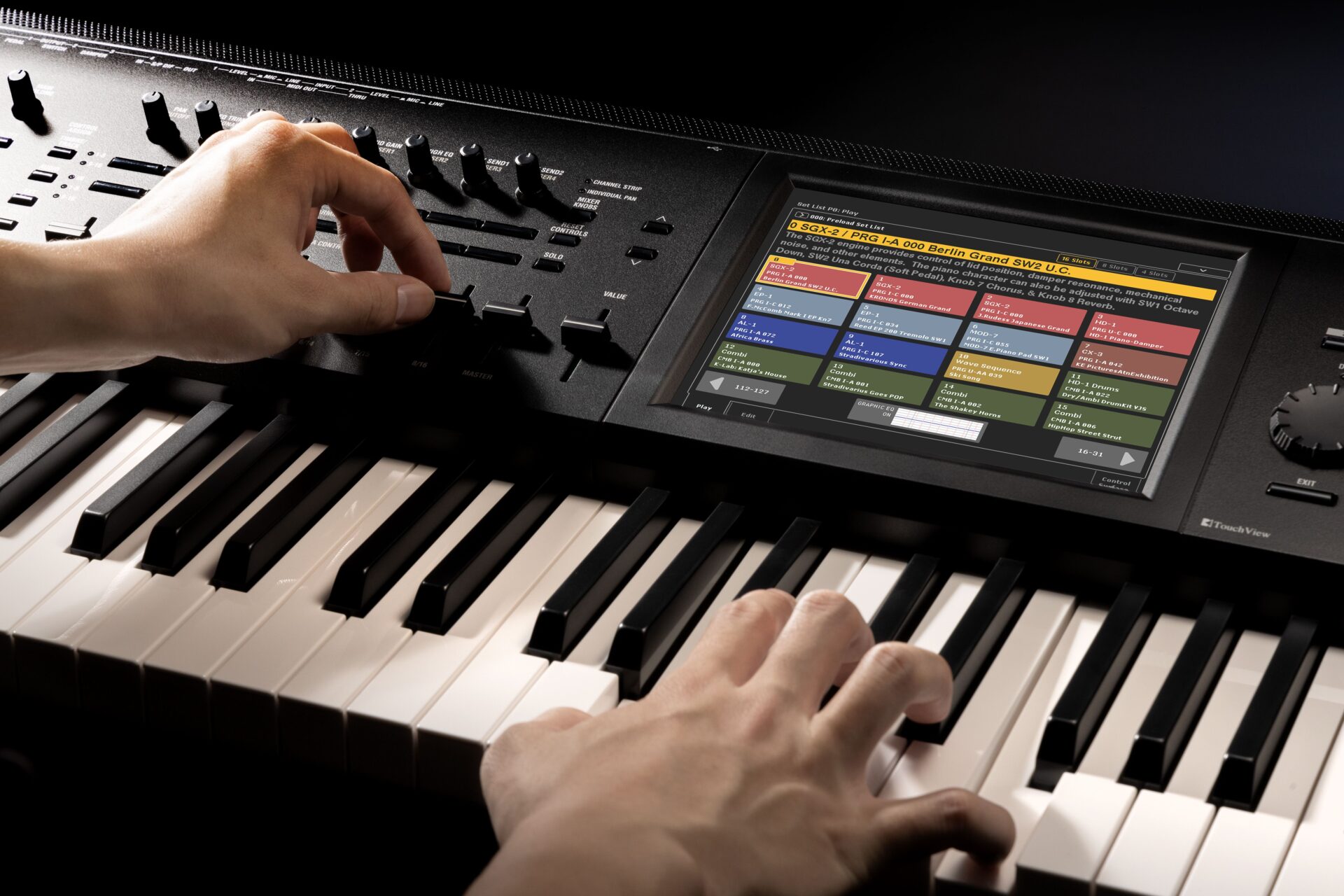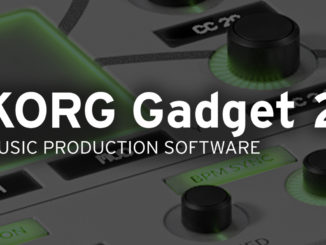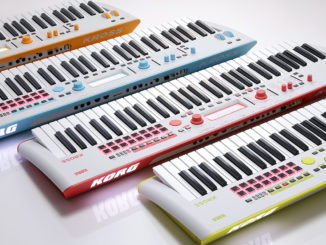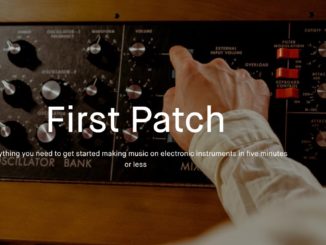NAMM 2025: Korg Kronos synth workstation is back in a new fourth generation with a re-engineered system architecture, more sounds, and more.
Professional musicians who perform on big stages night after night like to use synth workstations. The Korg Kronos has been very popular for many years. Jordan Rudess (Dream Theater) (interview), Michal Lapaj (Riverside) (interview), and Derek Sherinian… to name a few, use it on stage.
However, Korg’s flagship synth disappeared from the market and was replaced by the Nautilus, which was less well-received by musicians. This was due to the first no-aftertouch version and the very touch-control-focused user interface. Good news: they heard the calls for a successor. Korg has just released the new Kronos for NAMM 2025.
Korg Kronos
Yes, you didn’t read it wrong. The new Kronos has the same name as its predecessor. The overhaul design has not changed, except it’s more sleek and has an all-new powder-coated metal body with black wooden side panels. A simple black dress always works also for synths.
An 8-inch color TFT, SVGA (800×600 dots) display is onboard with adjustable brightness, introducing an improved TouchView graphical user interface.
Knobs, faders, and buttons are also unchanged from the Kronos versions from 2011 and 2014. The joystick that handles the pitch and mod wheel duties is also included again.
The new Korg Kronos will have three configurations: a 61-key version with a lightweight and expressive semi-weighted keybed with aftertouch and two versions (73 and 88) with a premium RH3 Real Weighted Hammer Action made in Japan.
Okay, visually Korg has given its synth workstation a light makeover, but in the the core a much bigger.
Re-engineered System Architecture
According to the press release, the KORG US team has re-engineered the system architecture in the Kronos 2025 that brings a 60% faster startup time. The built-in SSD has 120GB with 62GB of free space for extensive user sampling and sound library expansions.
In times of 2025 I would have liked 256GB, especially for a workstation where a single library can eat up pretty fast the space of your internal SSD. It’s not communicated but I hope you can install a second SSD like in the 2014 version.
Sound Engines
The Synthesizer section of the new Korg Kronos is largely the same. It comes with the best-known nine sound engines that cover a wide range of synthesis: virtual analog, FM, physical modeling, PCM sample playback, acoustic instruments and more.
No new engine on the menu but new sound additions and improvements for them.
The SGX-2 Premium Piano sound engine includes the new Italian Grand, known for its transparent resonance, giving you in total four distinct grand pianos, each with its own character.
Additional enhancements includes the Sympathetic String resonance, adding realism when the damper pedal is engaged, and newly recorded Una Corda (soft pedal) samples for even greater expressive control.
Then, the EP-1 MDS Electric Piano Sound engine adds the new Tine EP I Early that emulates the vintage tone of metal rod (tine) electric pianos. It gives you various customization options via modeled amps, cabinets, speakers, and vintage eXects.
The MS-20EX Synthesizer engine is also onboard again and expands upon its legacy with enhanced patch panel functionality, allowing modulation of filters with audio-rate oscillators, audio-to-control signal conversion, and more. Korg also gave the PolysixEX an upgrade with higher polyphony and modern enhancements.
There is a major step forward in the built-in sound catalogue. The new Korg Kronos ships with 256 additional programs, crafted to inspire your creativity, including 128 programs from 12 world-class sound designers.
Existing users of older Kronos and Nautilus devices can look forward. Korg will release in the second half of 2025 a soundpack that brings the latest Kronos sounds to early models.
Additionally, the new KRONOS offers two types of preloaded data, optimised to support both KRONOS 1/X and KRONOS 2 in their respective program orders. Plus, it is fully backward compatible with content from early Kronos models.
Features
In addition to these major changes, there is everything you know from the earlier Kronos and later Nautilus:
- advanced set list mode with customisation options and performance notes
- seamless sound transitions
- comprehensive eXects suite with 16 onboard processors and detailed EQs.
- 16 MIDI and 16 audio tracks for advanced sequencing and recording.
- Open Sampling System for flexible audio manipulation.
- Integrated KARMA® and Drum Tracks for creative phrase and groove generation.
- USB MIDI integreation with USB host ports
Connectivity
On the backside, you can find inputs and outputs of the previous Kronos versions:
- main L/R stereo 1/4” TRS Balanced output
- four balanced independent mono outs
- two mono inputs (line/mic level) with indepdendent leveler
- 1/4” stereo phone jack (headphone)
- three pedal inputs (damper, switch, pedal)
- S/P DIF In/Out
- 5-Pin MIDI interface (In/Out/Thru)
- USB-B port for data and digital audio (2-channel audio interface with 24-bit, Sample Rate: 48 kHz)
- two USB host ports for external MIDI controllers
Korg Kronos (4th Gen) First Impression
Welcome back Korg Kronos. At first glance it looks like a very good upgrade. The new version is not a revolution but a nice evolution with many new sounds and features. I would have liked more synthesis options but let’s see where the journey of the new Kronos takes us.
Korg Kronos is available soon for a starting price of £2649 and will be available in three versions with 61, 73, and 88 keys
More information here: Korg









Be the first to comment